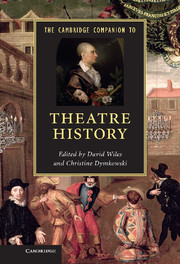Part IV - What?
Published online by Cambridge University Press: 05 February 2013
Summary
What?
In order to write a history of the theatre, one has to determine what ‘theatre’ is. As became increasingly clear in the last section, this is a political question. We had originally hoped that Part III would include a chapter on South African theatre. In his proposal for that chapter, Temple Hauptfleisch planned to address
the pervasive Western tendency to maintain an artificial distinction between art and life, between fine art, applied arts and social forms and practices – in brief between ‘art’ and ‘non-art’ – and the accompanying Western need to talk about, define, categorise and evaluate art forms in terms of such dichotomies. Largely the creation of a book-culture, not a performance culture, this kind of thinking led to the idea that any performance could only be ‘legitimised’ when it could be recorded and ‘placed’ somehow in terms of a Western concept of theatre, or at least a recognisable concept of performance. . . So the obvious strategy in the past has been to leave anything that does not fall into the clear-cut categories out of the reckoning. Hence festivals, street theatre, ritual dances, communal performances of all kinds were ignored and never recorded with tools or in ways that would make them meaningful to the theatre historian.
- Type
- Chapter
- Information
- The Cambridge Companion to Theatre History , pp. 163 - 168Publisher: Cambridge University PressPrint publication year: 2012

